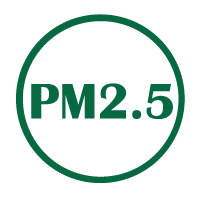ENVIRONMENT & HEALTH
By GROUP 5
JINGXI HUANG
YUJIE LI
YUE LIU
ince Under the Dome, a self-financed documentary film by Chai Jing, was first praised by the minister of environmental protection and later removed by Chinese Publicity department, haze issue has been annually mentioned when winter is coming. Starting from Beijing, the haze weather has swept across the whole country, including Hong Kong.
Transport emission was one of the biggest reasons for haze weather. In Hong Kong, the air quality is not satisfactory, in which roadside air quality is even worse. Hong Kong roadside air quality levels is still twice that of WHO’s upper limitation. Public transportation has become a major source of air pollution. The main pollutants include PM2.5, PM10, and NO2. Air pollution doesn't only affect the public health, but also causes direct and indirect economic losses.
What are the Key Pollutants?
Are you really know about your living place?
NO2
PM2.5
PM10
NOX
Nitrogen 0xide (NOX), may refer to a binary compound of oxygen and nitrogen. Nitrogen 0xide, especially NO2, is harmful to the nervous system of the human body. The excessive emission of Nitrogen 0xide can also cause acid rain. According to EPD HK, road traffic contributed to 17% of Nitrogen 0xide emission in 2015.

PM 10
PM10 refer to the particles with a diameter between 2.5 and 10 micrometers. PM10 can do harm to respiratory system and cardiovascular system, and cause asthma, lung cancer and cardiovascular disease. According to EPD HK, road traffic contributed to 9.02% of PM10 emission in 2015.

PM 2.5
PM2.5 refer to the particles with a diameter of 2.5 micrometers or less. PM2.5 has a larger superficial area than PM10, so it’s easier for PM2.5 to adsorb toxic substance. According to EPD HK, road traffic contributed to 10.49% of PM2.5 emission in 2015.
Death and Money Loss
Hedley Environmental Index, created by Dr.Hedley in 2008, is a new measurement method using economic loss and health burden to present the cost of air pollution.
The number of early deaths caused by air pollution has reached 2,196, causing economic damage $27.4 billion in 2016.
Through analysis towards the content of PM2.5, the number of early deaths and economic losses, it’s easy to see that during four years between 2013 and 2016, the three kind of values are positively correlated. It means research institutions can use the correlations to anticipate deaths and economic losses caused by air pollution using the data of PM2.5 in the future.
If the density of NO2 increases 10 micrograms, 134 people will die early, followed by 2 hundred million medical expenses and production losses. If the density of the particular matter increases 10 micrograms, local citizens’ death risk will grow by 1 per cent.
Calculate: What if the PM2.5 is⋯⋯
 HK$ Loss ≈
HK$ Loss ≈
 Early Death ≈
Early Death ≈
A Huge Difference
Hong Kong's standard of PM2.5 is 75 ug/m3 per 24 hours, while World Health Organization(WHO) sets it to 25. The pollutant PM2.5 is breathed directly into people's lungs, causing serious respiratory diseases. Compared to WHO, Hong Kong's standard is twice higher. As for PM10, HK standard is twice as much as that of WHO. Among all pollutants, only NO2 standard between Hong Kong and WHO is the same.
Air Quality Objectives, also known as AQOs, are Hong Kong Environment Protection plan of local air quality set out by The Air Pollution Control Ordinance (Cap.311). They are reviewed periodically, at least once every five years, in order to conserve and best use air for public interest.
However, they've become a serious health threat to the public. According to Friends of Earth, a local environmental organization, Hong Kong is placed in the last eight cities among 566 global cities ranked by the World Health Organization (WHO). In 2012, the Hong Kong government announced that it would finally update the AQO but they would not be implemented until 2014.
How Is The Air Quality Now?
Try to click the tags in the map and check the local pollutants. (Data from 28 April)
An "Effective" Little Improvement
Hong Kong government focus on only its “effective” improvement, saying: the government has been doing what was published on “A Clear Plan for Hong Kong” in 2013, and major pollutants from 2011 to 2015, PM10, PM2.5, and NO2 decreased respectively 19%, 24%, and 8%.
Changes of Roadside air quality for past 20 years
However, comparing to the pink line shown in above charts, in the past 20 years, Hong Kong real air quality hasn't reached the safe standard, overstepping WHO's standard as much as twice.
Environmental Protection Department has set 13 general stations and three roadside stations monitoring air quality. Figures collected from Mong Kok, Causeway Bay, and Central roadside stations showed that three pollutants average values are much higher than WHO’s standard. The condition has continued for 20 years.
